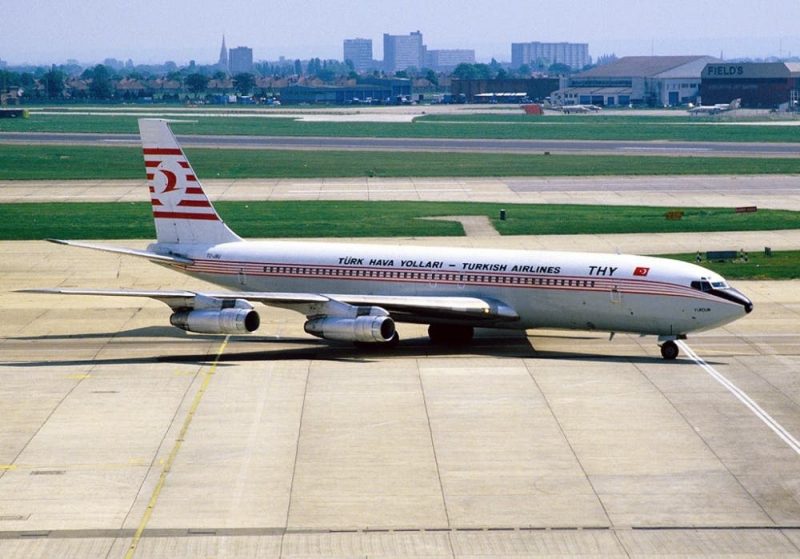Turkish Airlines boasts an immensely diverse route network, serving more destinations than any other carrier internationally. Flying out of its hub at the new Istanbul Airport, it has nearly 400 aircraft at its disposal which reach all corners of the world. A member of the Star Alliance since 2008, it uses its strategic location to offer key connections to and from Europe.
Turkish Airlines is fast approaching 90 years old, having been established in May 1933 as Turkish State Airlines. Initially an arm of the Ministry of National Defence that operated domestic services, the post-war era saw the carrier expand internationally. In the years since, it has amassed the largest route network globally by countries and destinations served.
Initially a domestic carrier
May 20th, 1933 saw Devlet Hava Yolları, otherwise known as Turkish State Airlines, come into existence. Flying for the Ministry of National Defence, it flew small interwar airliners on routes within Turkey. These ranged from the four-seat Junkers F 13 to the 10-seat Tupolev ANT-9, with the five-seat Curtiss Model 55 ‘Kingbird’ between them in terms of capacity.
Post-war international expansion
Turkish Airlines was one of several carriers to cash in on the post-war surplus in aircraft. After the conflict ended in 1945, it took delivery of several Douglas DC-3s and C-47s, which were larger than the plane it had previously operated. The capabilities of these aircraft allowed the carrier to begin expanding internationally, opening a route to Athens, Greece in 1947.
Turkish Airlines’ domestic operations still remained its core focus in the immediate post-war era. Nonetheless, it slowly but surely continued to expand its international network into other neighboring countries. Among the destinations that it added to its increasingly diverse portfolio of routes were Beirut (Lebanon), Cairo (Egypt), and Nicosia (Cyprus).
Governmental reorganization
The airline took a key step forward to becoming the global giant that it is today when, in 1956, it was reorganized by the government. This saw it renamed once more, to Türk Hava Yolları, meaning Turkish Airlines in the country’s native tongue. The new name gave the airline its ICAO code: THY. The carrier joined IATA shortly after the reorganization.
The newly reorganized Turkish flag carrier gained more of an international standing as a result of its reorganization and IATA membership. For example, 1957 saw it enter a technical partnership with the British Overseas Airways Corporation, following BOAC’s acquisition of 6.5% of the airline’s shares. This agreement lasted for around two decades.
Diversifying and growing the fleet
In addition to the partnership with BOAC, Turkish Airlines’ new standing allowed it to flourish in terms of fleet development. In the late 1950s and into the 1960s, it began adding further DC-3s, as well as newer European designs such as the Vickers Viscount and the Fokker F27 ‘Friendship.’ By the end of the decade, Turkish Airlines had received its first jet.
This came in the form of the rear-engined McDonnell Douglas DC-9 twinjet. The first of these arrived in 1967, with the four-engined Boeing 707 joining the fleet in 1971. According to data from ATDB.aero, Turkish Airlines went on to operate 11 and 17 aircraft from each of these aircraft families respectively. The widebody DC-10 also came onboard in 1972.
Increasing capital
While the 1970s heralded an era of continued fleet development for Turkish Airlines, this decade also marked the carrier’s worst disaster. This saw all 346 occupants of a DC-10 lose their lives when an Istanbul-Paris-London service crashed near Ermenonville, France. A faulty cargo door broke off in flight, resulting in an explosive decompression.
Nonetheless, Turkish Airlines was able to recover from this tragedy and steady itself in the following decade after a change of government in Turkey. The new regime wanted to utilize the country’s strategic location at the boundary of Europe and Asia to function as a gateway to these regions, with the national airline playing a key role in enabling this.
This resulted in multiple capital raises at the airline. It first rose to 60 billion Lira in 1984, and then to 150 billion Lira in 1987. By 1995, this figure had reached some 10 trillion Lira. The company’s growth resulted in the opening of a new technical center at Istanbul Atatürk. This state-of-the-art facility employed 1,500 of the carrier’s 6,000 workers at the time.
A modern-day giant
In the years that have followed, Turkish Airlines has continued to expand both its fleet and network in an impressive manner. It has also established several partnerships with other airlines, a process that began in the late 1990s following market deregulation. It has closest ties with its fellow Star Alliance members, having joined this group in April 2008.
Today, the 315 destinations that Turkish Airlines flies to represent the largest number served by any airline worldwide. In a similar vein, it also has an unrivalled number of countries among its route portfolio: an impressive 126. Cargo also plays an important role in the carrier’s operations, and ch-aviation.com shows that it has 22 freighters in its fleet.
About Guide2Uganda
Guide2Uganda (www.guide2uganda.ug) is the most comprehensive source of travel information about Uganda that exists on the web, with more content on its cities & towns, accommodation, attractions, events, museums and galleries than any other online guide that currently exists for Uganda; as well as being a dynamic travel news and events driven site with fresh content added daily.
According to WeFollow & Peer Index (that measure online influence), we are among the most influential online media organizations in Uganda. Guide2Uganda was also awarded ‘’Best Destination Website in Uganda’’ by Jumia Travel Uganda in the 2018 Africa Travel Awards.
Share your travel stories & photos with the world via email: info@guide2uganda.ug







